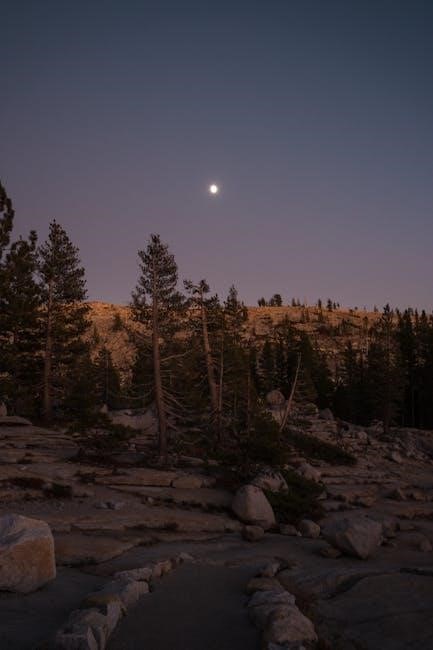National park adventures offer a gateway to breathtaking landscapes, diverse wildlife, and unforgettable experiences. Explore stunning natural wonders, immerse yourself in outdoor activities, and create lasting memories in these incredible destinations.
Overview of National Park Adventures
National park adventures provide unparalleled opportunities to connect with nature, offering diverse landscapes, wildlife, and outdoor activities. From hiking and camping to stargazing and wildlife exploration, these parks cater to all interests. With over 400 areas managed by the National Park Service, each location offers unique experiences, whether you seek adventure, relaxation, or educational enrichment. Plan your trip to explore iconic destinations, immerse yourself in nature, and create unforgettable memories amidst stunning natural beauty.
Why National Parks Are a Must-Visit Destination
National parks offer a unique opportunity to connect with nature, explore diverse landscapes, and experience breathtaking beauty. They provide a chance to disconnect from urban life and reconnect with the environment. These parks are not just scenic; they are rich in wildlife, history, and culture. Visiting national parks allows for adventure, relaxation, and personal growth, making them a must-visit destination for anyone seeking unforgettable experiences and a deeper appreciation for the natural world.
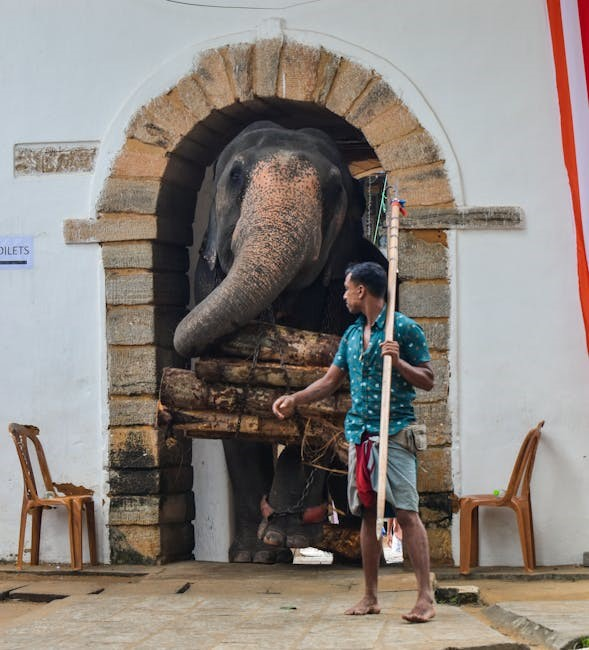
Choosing the Right National Park
Selecting the perfect national park involves considering your interests, preferred activities, and the unique landscapes each park offers to ensure an unforgettable adventure tailored to your preferences.
How to Select a National Park Based on Your Interests
Choosing the right national park starts with identifying your interests. If you love hiking, consider parks like the Rocky Mountains or Zion. For wildlife enthusiasts, places like Yellowstone or the Everglades offer abundant animal sightings. If scenic drives or photography are your passion, parks such as the Grand Canyon or Yosemite are ideal. Research park activities, trails, and seasonal highlights to align with your preferences for an unforgettable adventure tailored to your passions and goals.
Popular National Parks for Different Types of Adventures
From hiking in the Badlands to exploring Alaska’s vast wilderness, national parks cater to every adventurer. Yellowstone offers geothermal wonders, while Utah’s parks like Zion and Arches provide stunning red rock landscapes. For wildlife enthusiasts, Denali National Park in Alaska is a must-visit. Each park offers unique experiences, making them ideal for tailored adventures, whether you’re seeking solitude, thrill, or natural beauty.
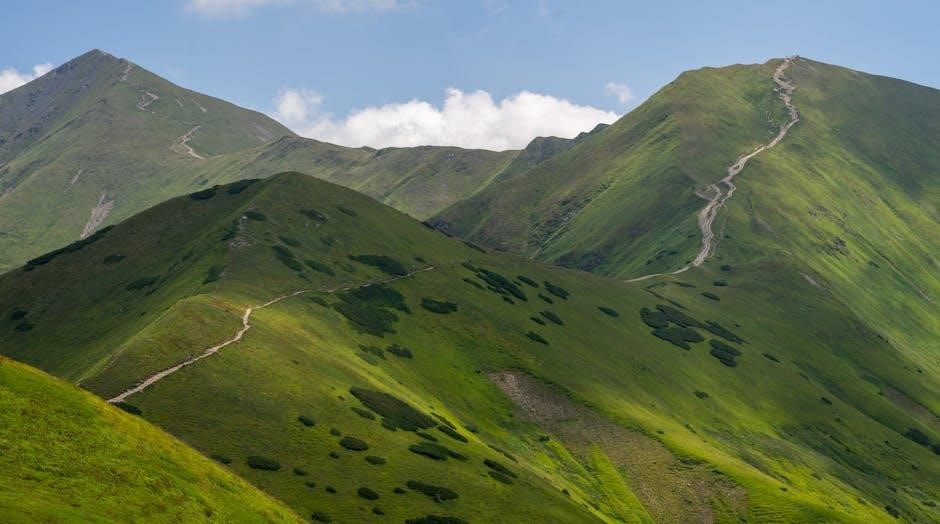
Planning Your Itinerary
Research park highlights, prioritize attractions, and allocate time for hikes and activities. Create a realistic schedule, balancing exploration with relaxation for a smooth, stress-free adventure.
Creating a Realistic and Enjoyable Travel Plan
Planning your national park adventure requires balancing activities with relaxation. Start by listing must-see attractions and experiences, then allocate realistic time slots. Consider travel distances, park opening hours, and activity durations. Build flexibility into your itinerary to accommodate unexpected highlights or downtime. Research seasonal conditions and book accommodations early. A well-structured plan ensures a stress-free and memorable journey, allowing you to fully immerse yourself in the beauty of nature and adventure.
Must-See Attractions and Activities in Each Park
Each national park boasts unique attractions, from iconic landmarks to hidden gems. Explore Yellowstone’s geysers, hike the Grand Canyon’s rim trails, or kayak through Alaska’s fjords. Don’t miss Zion’s Narrows, Yosemite’s Half Dome, or the wildlife of the Everglades. Activities like birdwatching, stargazing, or scenic drives offer unforgettable experiences. Plan your visit to include ranger-led tours, photography hotspots, and seasonal events that highlight the park’s natural beauty and cultural heritage.
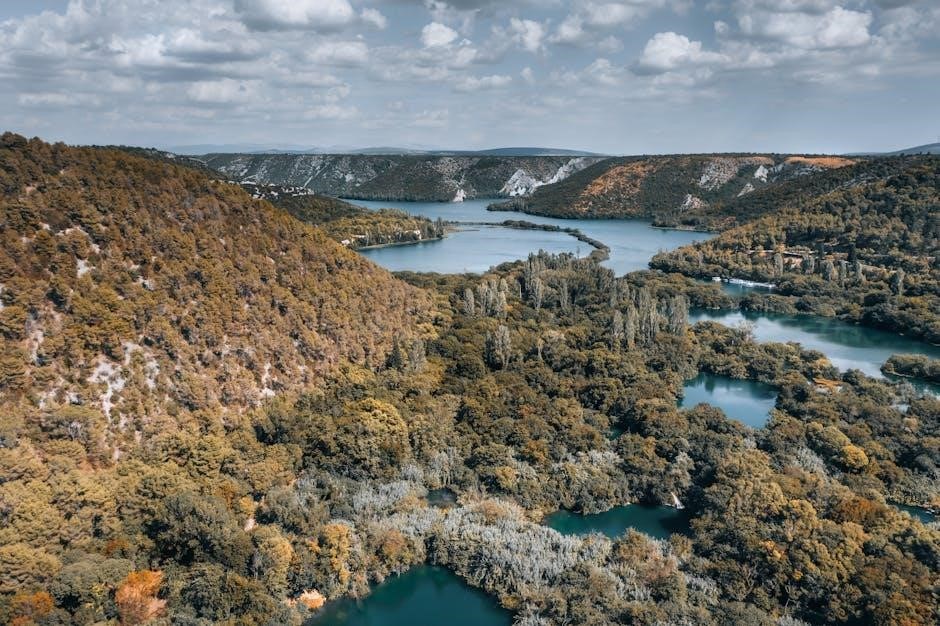
Accommodation Options
From camping under the stars to cozy lodges, national parks offer diverse lodging options. Book early, especially during peak seasons, to secure your preferred stay.
Camping in National Parks: Tips and Best Practices
Camping in national parks offers an immersive way to connect with nature. Choose campsites wisely, considering seasonality and accessibility. Bring essential gear like sturdy tents, sleeping bags, and cooking equipment. Always follow park rules, including waste disposal and quiet hours. Leave campsites as you found them to preserve the environment. Be prepared for unpredictable weather and wildlife encounters. Enjoy stargazing and the serene beauty of your surroundings. Respect nature to ensure a memorable and eco-friendly camping experience.
Lodging and Hotels Near National Parks
Discover a wide range of lodging options near national parks, from cozy hotels to luxurious resorts. Many parks offer convenient accommodations, ensuring easy access to trails and attractions. Booking in advance is recommended, especially during peak seasons. Hotels often provide amenities like dining, Wi-Fi, and tour planning assistance. Consider eco-friendly lodges or budget-friendly motels for a cost-effective stay. Contacting hotels directly can help address specific needs or concerns, ensuring a comfortable base for your adventure.
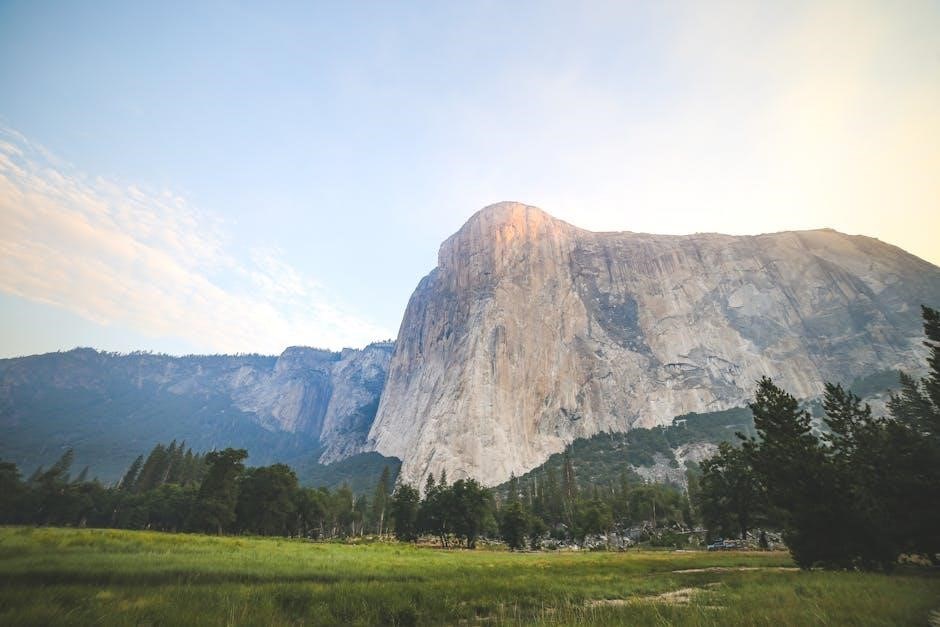
Hiking and Trail Planning
Plan your hike by selecting trails that match your fitness level and interests. Check trail conditions, markings, and regulations before heading out for a safe adventure.
How to Choose the Right Hiking Trail
Choosing the right hiking trail involves matching it to your fitness level and interests. Consider trail length, elevation gain, and difficulty ratings. Check for permits and seasonal accessibility. Opt for trails with scenic views or unique features that align with your goals. Review park maps and visitor feedback to ensure the trail suits your experience level and time constraints. This approach helps create a safe and enjoyable hiking experience in national parks.
Preparing for a Safe and Successful Hike
Preparing for a safe and successful hike involves checking trail conditions, weather forecasts, and choosing the right gear. Bring essentials like water, snacks, a map, and a first-aid kit. Inform someone about your itinerary and start early to avoid fatigue. Wear sturdy shoes and dress in layers for varying temperatures. Stay alert for wildlife and potential hazards, and carry a portable charger for emergencies. Proper preparation ensures a memorable and secure hiking experience in national parks.
Safety and Emergency Preparedness
Always carry essentials like water, a first aid kit, and a map. Check weather conditions and inform someone of your plans. Be prepared for emergencies with proper gear and knowledge to ensure a safe adventure.
Essential Safety Tips for National Park Visits
Essential safety tips for national park visits include staying on designated trails and carrying a map to avoid getting lost. Bring sufficient water, snacks, and sun protection to stay hydrated and comfortable throughout your journey. Always check weather forecasts to prepare for unexpected conditions. Inform a friend or family member about your itinerary before heading out. Maintain a safe distance from wildlife and never feed them to ensure both your safety and their well-being. By following these guidelines, you can enjoy a safe and memorable adventure in nature.
What to Do in Case of an Emergency
In case of an emergency, stay calm and assess the situation. Carry a first-aid kit, emergency contacts, and a GPS device. Know the nearest medical facility and park ranger station. For injuries, provide basic first aid and seek help immediately. If lost, stay visible and follow marked trails. Keep emergency supplies like water, snacks, and a whistle. Inform someone about your itinerary before heading out. Always follow park rules and ranger instructions to ensure safety and prevent emergencies.

Packing the Right Gear
Packing essentials like sturdy hiking boots, water bottles, layers, and weatherproof gear ensures a comfortable adventure. Don’t forget activity-specific items like camping equipment or photography gear.
Essentials to Bring on Your National Park Adventure
Pack lightweight, versatile clothing, sturdy footwear, and layers for changing weather. Bring a reusable water bottle, sunscreen, and insect repellent for outdoor comfort. Carry a first-aid kit, map, and GPS device for navigation. Don’t forget snacks, a flashlight, and extra batteries. Include binoculars for wildlife viewing and a portable charger for devices. Check the weather forecast and adjust your gear accordingly. A well-prepared backpack ensures a safe and enjoyable experience in the park.
Specialized Gear for Specific Activities
For specific adventures, specialized gear is essential. Hikers may need trekking poles or crampons for icy trails, while rock climbers require ropes and harnesses. Water enthusiasts should bring kayaks, canoes, or snorkeling gear. Wildlife watchers benefit from binoculars and field guides. Always research the activity and environment to ensure you have the right equipment, enhancing safety and enjoyment. Proper gear preparation ensures a memorable and safe national park adventure.
Wildlife and Nature
National parks are home to diverse wildlife and vibrant ecosystems. Observe animals in their natural habitats, respect their space, and appreciate the unique flora that surrounds you.
How to Interact Safely with Wildlife
When encountering wildlife in national parks, maintain a safe distance to avoid disturbing animals. Never feed or approach them, as this can disrupt their natural behavior. Keep trash secure to prevent attracting wildlife to campsites or trails. Be aware of your surroundings and make noise while hiking to avoid startling animals. If an animal appears aggressive, stay calm and slowly back away. Always follow park guidelines and ranger advice to ensure safe interactions and protect both humans and wildlife.
Identifying and Appreciating Local Flora and Fauna
Discover the diverse flora and fauna of national parks by using field guides or park-provided resources. Attend ranger-led programs to gain insights into unique species. Observe wildlife from a safe distance to avoid disruption. Appreciate the vibrant ecosystems by noting plant adaptations and seasonal changes. Document your findings in a journal or photos for future reference, fostering a deeper connection with nature while preserving its beauty for others.
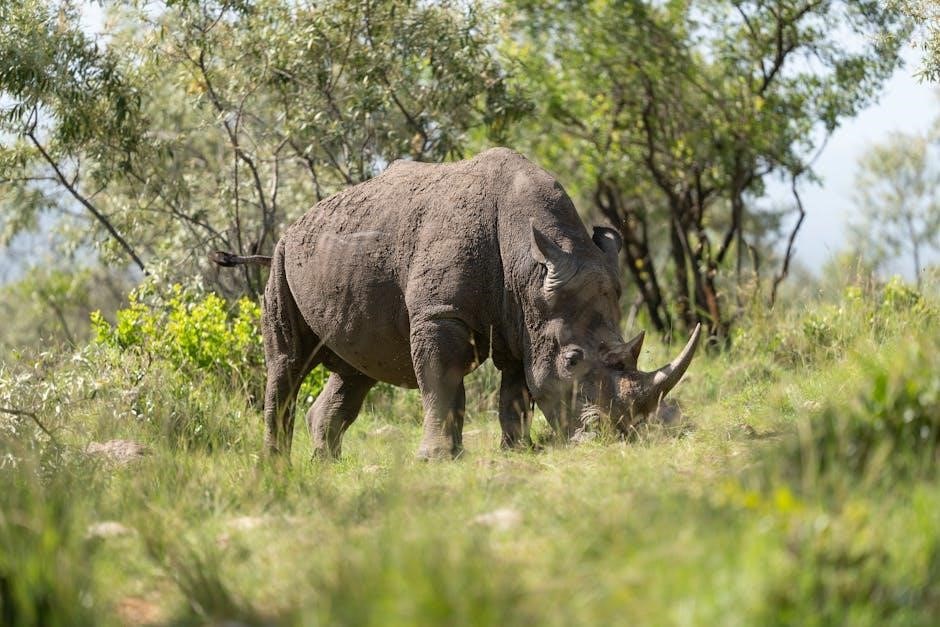
Photography and Memories
Capture the beauty of national parks with expert photography tips, from golden hour shots to composition tricks; Document your journey to cherish unforgettable moments forever.
Capturing Stunning Photos in National Parks
Capturing the beauty of national parks requires skill and preparation. Use a tripod for sharp images, especially during golden hours, and experiment with angles to emphasize vast landscapes. A polarizing filter can enhance colors and reduce glare. Focus on unique compositions, such as framing mountains with trees or reflecting skies in lakes. Pay attention to lighting and weather conditions to create dramatic effects. Practice patience and respect for nature while preserving memories of your adventure.
Documenting Your Adventure for Future Reference
Preserve your national park memories by capturing stunning photos, keeping a travel journal, and recording videos. Use cameras, drones, or smartphones to document scenic views and wildlife. Note down your experiences, tips, and favorite spots for future reflection. Consider creating a scrapbook or digital album to organize your memories. Sharing your journey on social media or blogs can inspire others. Proper documentation ensures your adventure remains a cherished legacy for years to come.
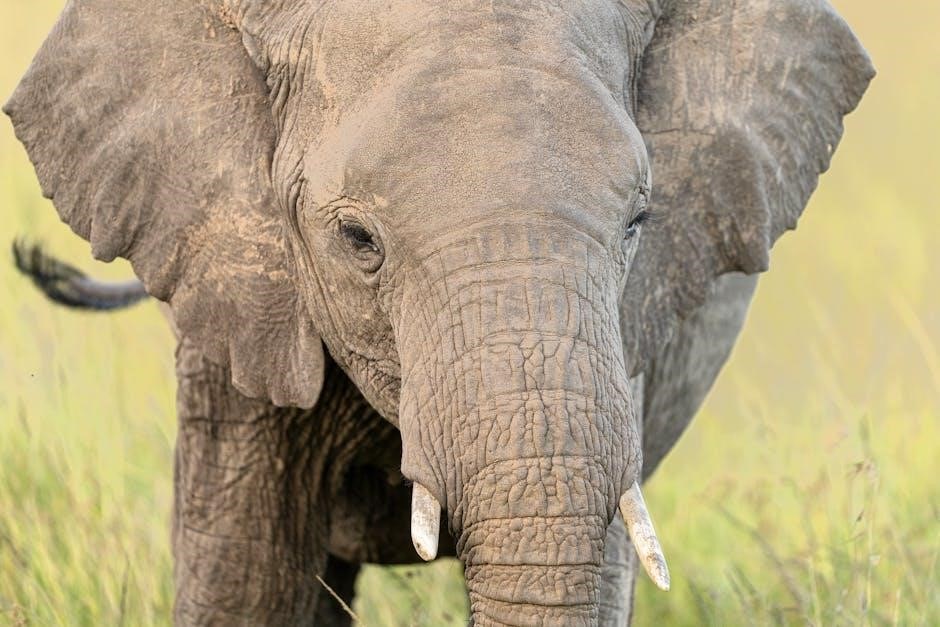
Stargazing and Nighttime Activities
National parks offer breathtaking stargazing opportunities due to their dark skies. Parks like Big Bend and Death Valley are renowned for crystal-clear views of celestial wonders, making nighttime unforgettable.
Best National Parks for Stargazing
Experience the magic of the night sky at national parks with minimal light pollution. Parks like Bryce Canyon, Death Valley, and the Badlands offer incredible stargazing opportunities. Big Bend National Park in Texas is renowned for its dark skies, perfect for viewing constellations and celestial events. Attend ranger-led stargazing programs or simply find a quiet spot to gaze at the stars. These parks provide unforgettable nights under the vast, star-filled sky.
- Bryce Canyon: Known for its clear, dark skies and stunning starry vistas.
- Death Valley: Offers some of the darkest skies in the U.S., ideal for stargazing.
- Big Bend: A gold-tier Dark Sky Park with exceptional views of the Milky Way.
Plan your visit during new moon phases for the best stargazing experience.
How to Make the Most of Nighttime in the Parks
To fully experience the magic of national parks at night, plan stargazing sessions in dark-sky preserves like Badlands or Utah’s parks. Bring red flashlights to preserve night vision and arrive early for the best views. Consider guided night hikes or wildlife spotting tours. Download stargazing apps to identify constellations. Pack warm clothing and snacks for extended nighttime adventures. Respect park rules and wildlife by staying on trails and keeping noise levels low. Capture memories with low-light photography techniques for unforgettable moments.
Transportation and Navigation
Transportation options vary, from shuttles to rentals, ensuring access to trails. Maps and GPS are vital for navigation, particularly where cell service is limited.
Getting Around National Parks
Exploring national parks requires thoughtful transportation planning. Many parks offer shuttle services, reducing traffic and parking stress. Renting bikes or joining guided tours can enhance your experience. For remote areas, personal vehicles or hiking may be necessary. Always check park maps and plan routes in advance to ensure smooth navigation. Reserving shuttles or parking spots early is advisable, especially during peak seasons. Combining transportation options can help you make the most of your adventure while minimizing environmental impact.
Using Maps and GPS for Navigation
Navigating national parks requires reliable tools like detailed maps and GPS devices. Always carry a physical map as a backup, as GPS signals can be unreliable in remote areas. Download offline maps on your smartphone using apps like Gaia GPS or Maps.me. Familiarize yourself with trail markers and landmarks to stay on course. Bring a compass and know how to use it for added security. Proper navigation ensures a safer and more enjoyable adventure in the wilderness.
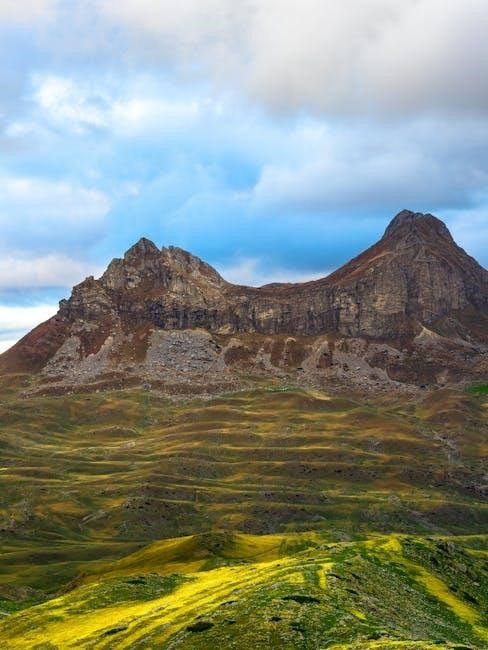
Budgeting and Cost Management
Plan ahead to save on entrance fees and lodging. Compare prices for accommodations and look for discounts or free entry days to minimize costs.
How to Plan a Budget-Friendly National Park Trip
Planning a budget-friendly national park trip involves researching entrance fees, camping options, and free activities. Consider visiting during off-peak seasons or utilizing free entrance days. Pack meals and snacks to reduce costs. Opt for camping or budget lodgings near the park. Use park apps and websites for real-time information on discounts and affordable trails. Prioritize must-see attractions while balancing costs. With smart planning, you can enjoy an unforgettable adventure without overspending. Start early to secure bookings and make the most of your trip.
Cost-Effective Tips for Accommodation and Activities
Plan budget-friendly stays by booking in advance or opting for camping. Consider off-peak seasons for lower rates. Pack meals to reduce dining costs. Look for free or low-cost activities like hiking or ranger programs. Utilize park shuttles to save on fuel. Bring reusable gear to minimize expenses. Research discounts or annual passes for frequent visits. Explore nearby towns for affordable lodging. Combine group activities to split costs. These strategies help you enjoy your adventure without overspending.
National park adventures provide transformative experiences, inspiring personal growth, creating unforgettable memories, and fostering a lifelong passion for nature and exploration. Embark on your next adventure today!
Final Thoughts on Planning a National Park Adventure
Planning a national park adventure is a rewarding journey that combines preparation with excitement. From choosing the right park to packing essentials, every step enhances your experience. Remember to stay safe, respect nature, and embrace the beauty around you. Whether hiking, camping, or stargazing, these moments create lifelong memories. With careful planning, you’ll be ready to explore the great outdoors and connect with nature on a deeper level. Start your adventure today and let the wilderness inspire you!
Encouragement to Start Your Own Adventure
Embarking on a national park adventure is a transformative experience that connects you with nature and ignites your sense of wonder. Whether you’re exploring vast landscapes, hiking scenic trails, or simply soaking in the beauty, every moment is an opportunity for growth and discovery. Don’t hesitate to start planning—each park offers unique experiences tailored to your interests. Take the leap, embrace the unknown, and create unforgettable memories that will inspire you for a lifetime. The adventure awaits!
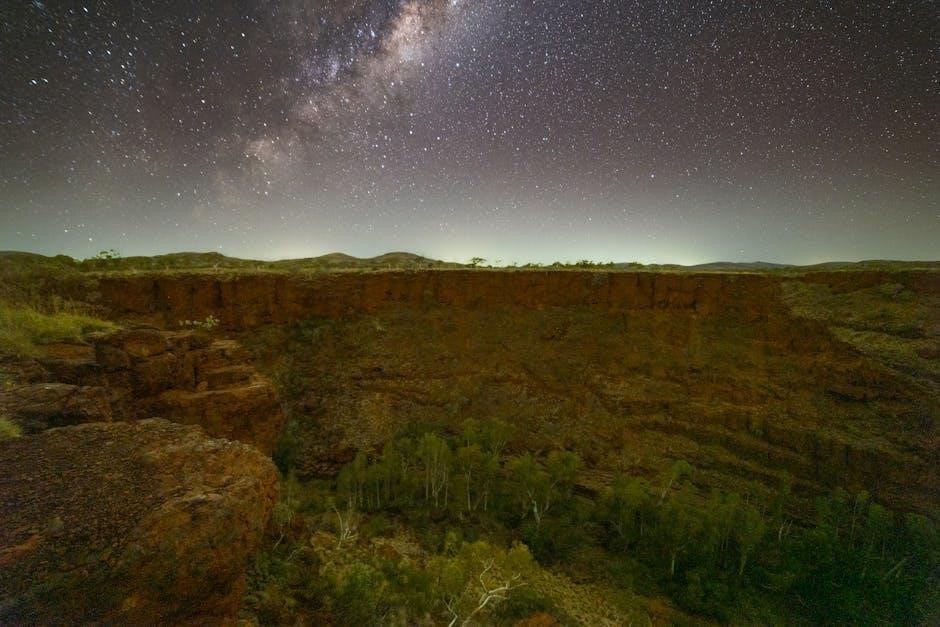
Additional Resources
Recommended Websites and Guides for National Park Planning
Explore official NPS websites, travel blogs, and guides for detailed park information, trail maps, and expert tips to enhance your adventure planning.
Books and Apps for Enhancing Your Adventure
Discover essential books on wildlife, photography, and hiking, along with apps like AllTrails and National Park Service apps for real-time navigation and exploration.
- The National Park Service website offers detailed information on park locations, trails, and regulations.
- G Adventures provides expert tips and guided tours for immersive park experiences.
- A comprehensive Utah parks guide includes must-see attractions and scenic routes.
- Alexyn’s Alaska itinerary shares insights for exploring all eight of Alaska’s national parks.
- Good Trip Adventures offers specialized backpacking trips, including women-focused excursions.
These resources ensure a well-planned and memorable national park adventure.
Enhance your national park adventure with guidebooks like Alexyn’s Alaska National Parks guide or Utah road trip itineraries, offering detailed tips and stunning photos. Apps like National Park Service’s official app provide maps, trail info, and real-time updates. GPS-based apps help navigate remote areas, while photo editing tools ensure your memories shine. These resources empower you to plan, explore, and capture your journey effectively, making every adventure unforgettable and well-documented.
